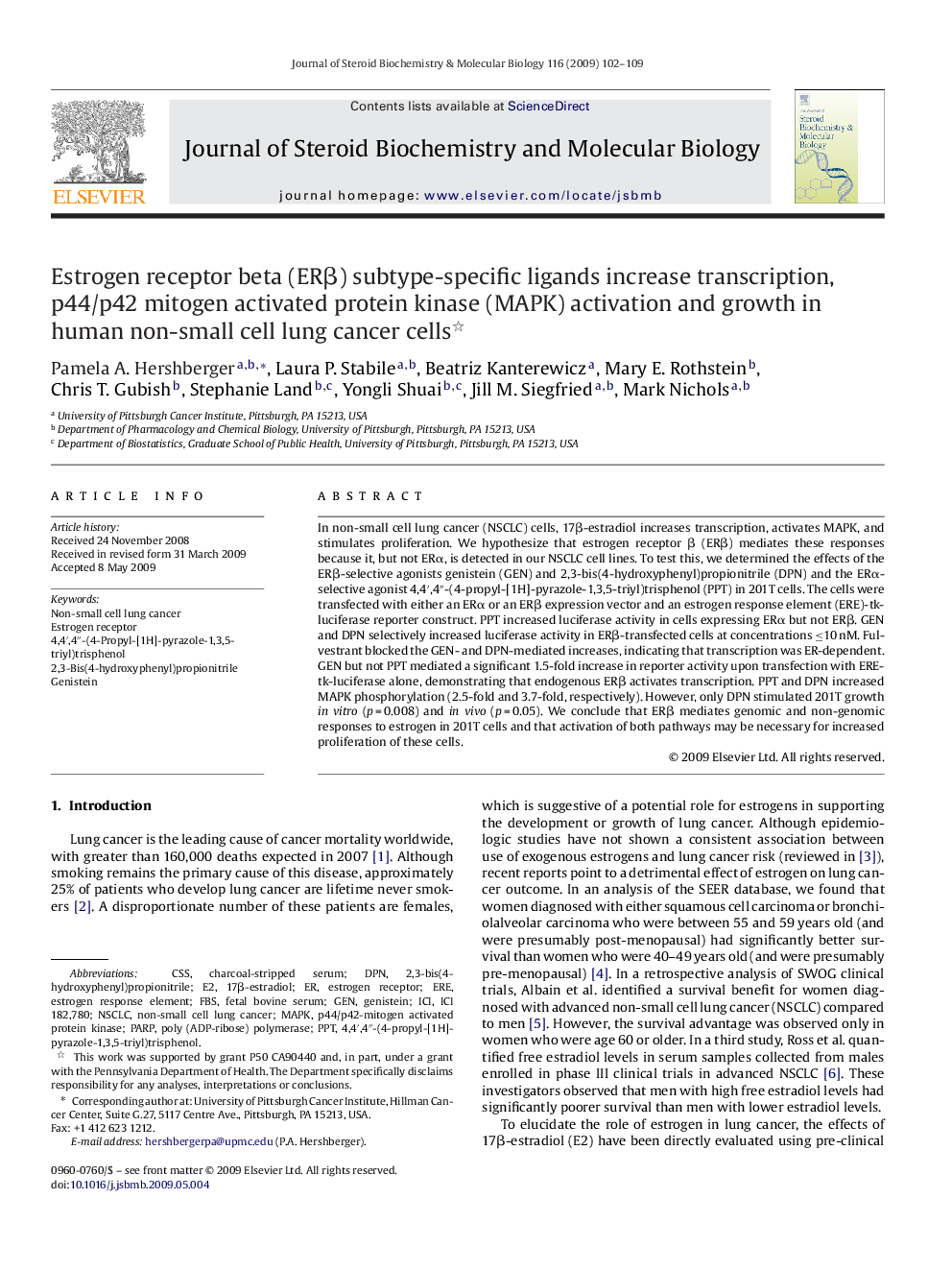| Article ID | Journal | Published Year | Pages | File Type |
|---|---|---|---|---|
| 1992723 | The Journal of Steroid Biochemistry and Molecular Biology | 2009 | 8 Pages |
In non-small cell lung cancer (NSCLC) cells, 17β-estradiol increases transcription, activates MAPK, and stimulates proliferation. We hypothesize that estrogen receptor β (ERβ) mediates these responses because it, but not ERα, is detected in our NSCLC cell lines. To test this, we determined the effects of the ERβ-selective agonists genistein (GEN) and 2,3-bis(4-hydroxyphenyl)propionitrile (DPN) and the ERα-selective agonist 4,4′,4″-(4-propyl-[1H]-pyrazole-1,3,5-triyl)trisphenol (PPT) in 201T cells. The cells were transfected with either an ERα or an ERβ expression vector and an estrogen response element (ERE)-tk-luciferase reporter construct. PPT increased luciferase activity in cells expressing ERα but not ERβ. GEN and DPN selectively increased luciferase activity in ERβ-transfected cells at concentrations ≤10 nM. Fulvestrant blocked the GEN- and DPN-mediated increases, indicating that transcription was ER-dependent. GEN but not PPT mediated a significant 1.5-fold increase in reporter activity upon transfection with ERE-tk-luciferase alone, demonstrating that endogenous ERβ activates transcription. PPT and DPN increased MAPK phosphorylation (2.5-fold and 3.7-fold, respectively). However, only DPN stimulated 201T growth in vitro (p = 0.008) and in vivo (p = 0.05). We conclude that ERβ mediates genomic and non-genomic responses to estrogen in 201T cells and that activation of both pathways may be necessary for increased proliferation of these cells.
